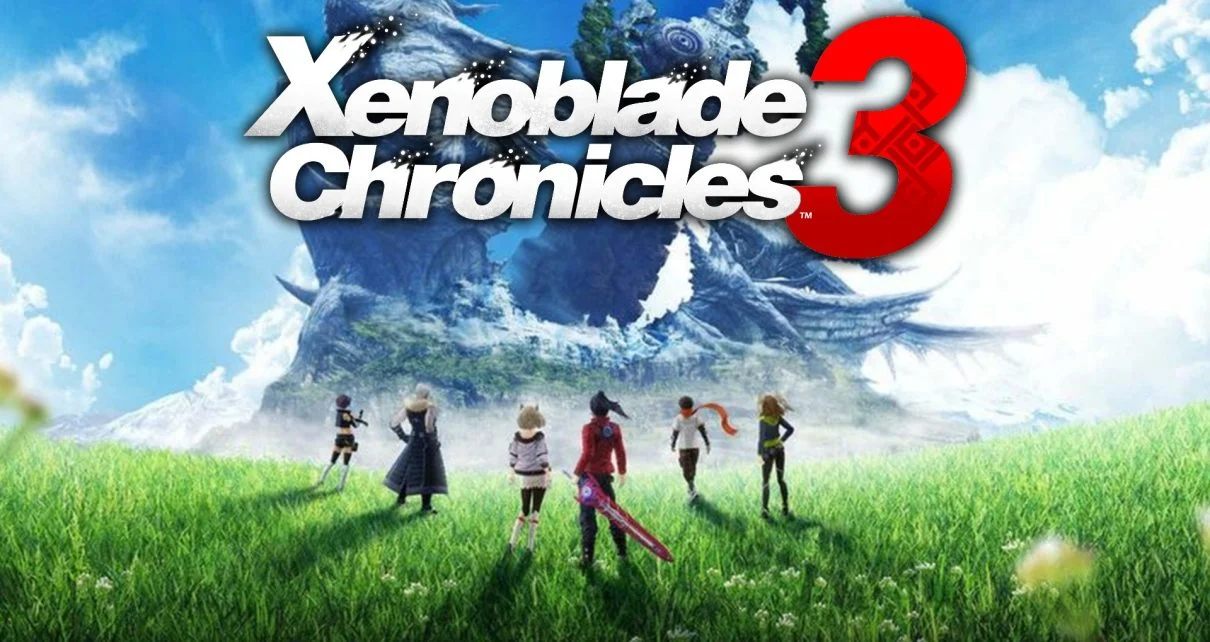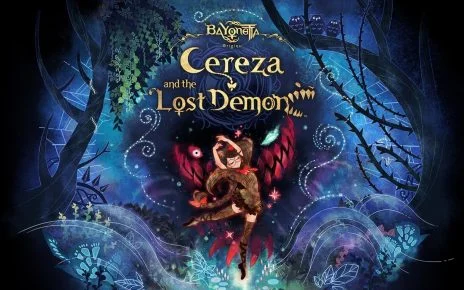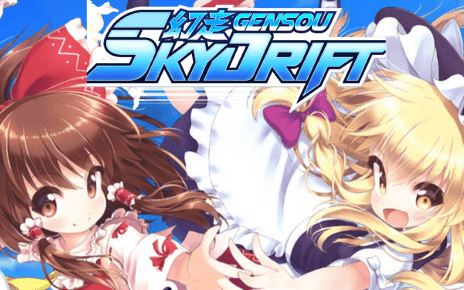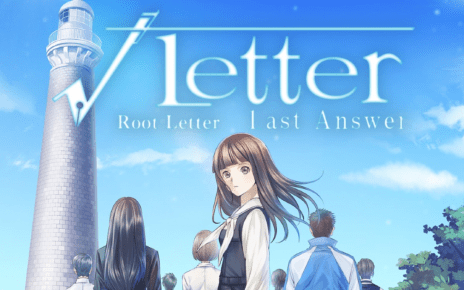The Xenoblade series only seems to be growing larger and larger by the day. It wasn’t that long ago where fans of Monolith Soft had been fighting to see the first game be released in the west. Now, it’s the darling child of Nintendo’s RPG lineup. Xenoblade Chronicles 3 is yet another massive, sweeping epic that aims to cap off the trilogy that started on the Wii.
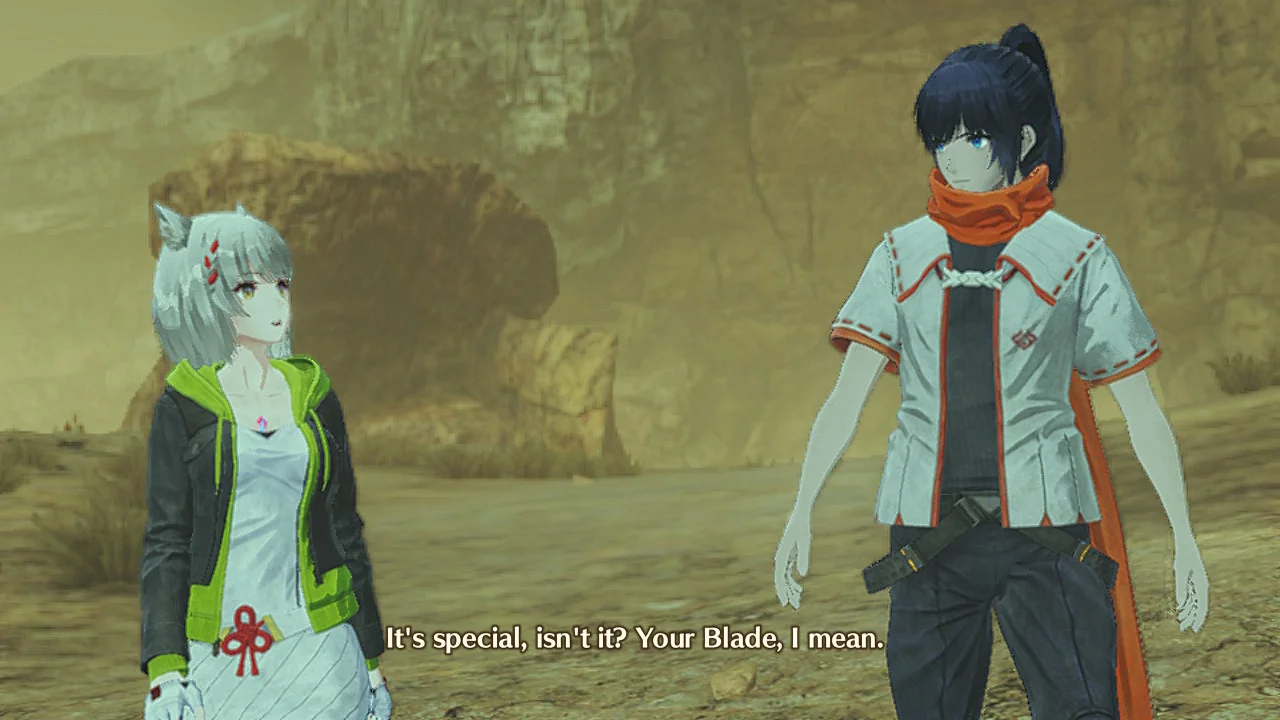
War Never Changes
Starting with the utterly gruesome opening scene, Xenoblade Chronicles 3 is a game that pulls no punches with its premise. In the war-torn world of Aionios, bloodshed and mutual killing is the only thing its inhabitants know to be true. Compassion is seen as a weakness, and humanity for one’s enemy is a beacon of hope that is quickly snuffed out. The lines between fact and fiction have long since been blurred as the two nations of Agnus and Keves are locked in an eternal struggle against one another. The only thing that stands a chance at putting a stop to this war is an unlikely alliance of soldiers from both sides of the conflict.
It’s the commitment to showcasing the scope of war’s psychological horrors that makes Xenoblade Chronicles 3 such an interesting game on a philosophical level. It never takes a moment to downplay itself either. From start to credits, it rarely lets up on its discussion of the fragility of life, how it can be taken away at a moment’s notice, and what one does with it. Considering the backgrounds of the main characters, these in-depth talks about life that only exists to take away more life happen regularly. This is backed by very smooth and natural dialogue, which seamlessly blends breakdowns of highbrow concepts with regular conversation.
Speaking of the main characters, Xenoblade Chronicles 3 has what is far and away the most consistent and likable main cast in the series. While prior games have been no slouches in the character department, it was hard to ignore main party members that were just weak links. Here, while there is a pecking order for who is more and less important, I was never left with a feeling that a main character just didn’t matter. In the long run, everyone pulls their weight and makes meaningful choices that affect the broader scope of the story.
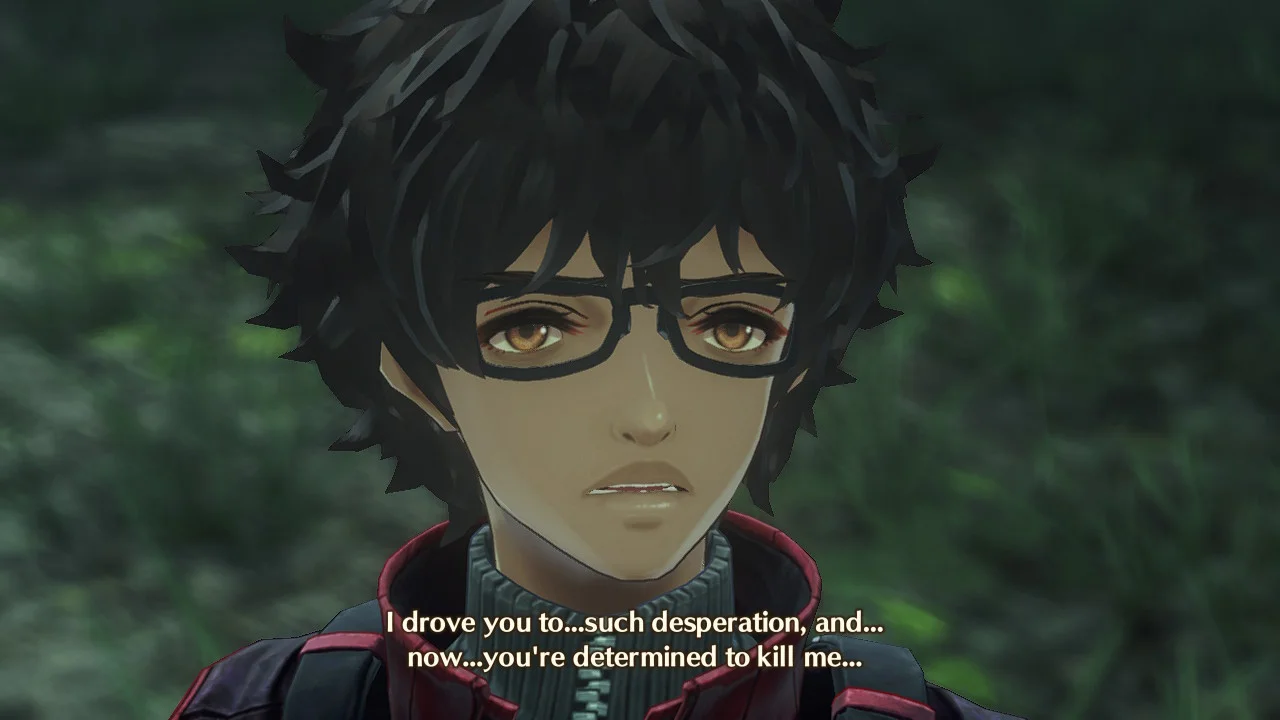
Noah, the main character, is of particular highlight. Similar to Rex from the previous game, Noah is at first defined by his empathy in a world that seems devoid of it. Be it friend or foe, a life lost is not something he could ever see as a positive. Tellingly, it’s this steadfast belief of his that causes friction with everyone around him, and why it makes the choices he makes so interesting to watch unfold.
The Collided Worlds and Its People
Aionios is a distorted, completely wrecked mishmash of the worlds depicted in the first two Xenoblade outings. The setting is filled with locales that were forcibly mangled together, creating a striking picture. How this came to be and what this might imply is sure to be one of the biggest mysteries of the game for fans of the series. However, for the story itself, this ends up being neither here nor there for the vast majority of its runtime. It’s to a point where I’m left wondering why this game was a crossover of the first two to begin with, as it’s almost entirely standalone. Being a standalone game is not necessarily a problem in of itself, but it makes the imagery here feel far less impactful than what is perhaps intended. It’s sure to evoke a reaction from fans, but not anyone in the story, and that’s the problem.
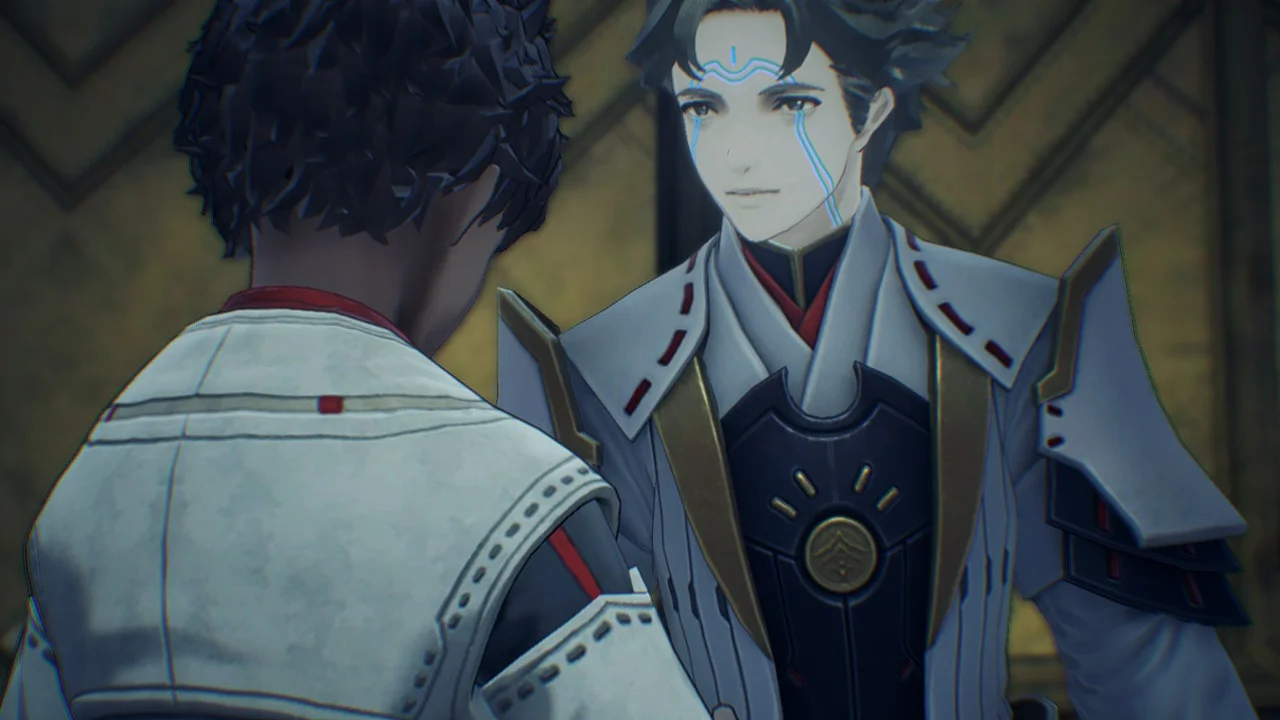
This also extends to the characters, who are in themselves mishmashes of races seen in both prior games. What a character was and where they hailed from was a topic of major importance in those games, but not so here. Whether a character is a High Entia from 1 or a Blade from 2 seems to not matter much. While there is in-universe justification for why this is, it’s hard not to get the sense that there was some missed opportunity here when compared to how big a deal it was previously. Besides the adorable Nopon creatures, which are as awesome as ever, much of Xenoblade 3’s visual design comes off as fancy window dressing and little more.
This shallowness doesn’t just stop at how things look, either. It also extends to the game’s many villains. The villains in Xenoblade games are often some of the biggest highlights in the story, doing things that completely throw the story off the rails for a time. That’s why it’s utterly baffling to me that the majority of villains in Xenoblade Chronicles 3 feel like something out of a Saturday morning cartoon by comparison. The new villain group dubbed ‘Moebius’ is far and away the worst part of the game’s story. They are a constant in the narrative, be it in the main story or otherwise. Aside from their incredible introduction scenes, I was left rolling my eyes nearly every time they showed up.

Changing it up with how the villains behave is not a problem. But the issue with Moebius is that they imbue much of the story with an air of predictability. Couple that with boring motivations and often not being enough of a threat to matter, and the biggest question they present is why they got so much screen time. If you’ve met one member of them, you’ve met nearly all of them. The few villains who are genuinely different from Moebius are quite fun to watch, but they’re suffocated by everything else being so disappointing.
Them’s Fighting Words
Xenoblade Chronicles 3’s combat, much like the world and story, is a blend of both 1 and 2, with some influence from X thrown in as well. With up to a whopping seven combatants at your disposal during a given encounter, you’ll fight with mechanics both familiar and new. Like normal, you’ll engage in real-time battles where proper positioning around an enemy takes on a vital role. You’ll take control of one character in your party at a time and assume whatever role they are equipped for. These roles can range from offense, defense and aggro, to healing and buffing your party. With Arts, you can do stronger attacks or cast healing spells and buffs. By correctly playing into whatever role your character fits into, you can do Talent Arts, devastatingly powerful attacks and skills. All of this is only the surface of the stupefying potential of 3’s combat system.
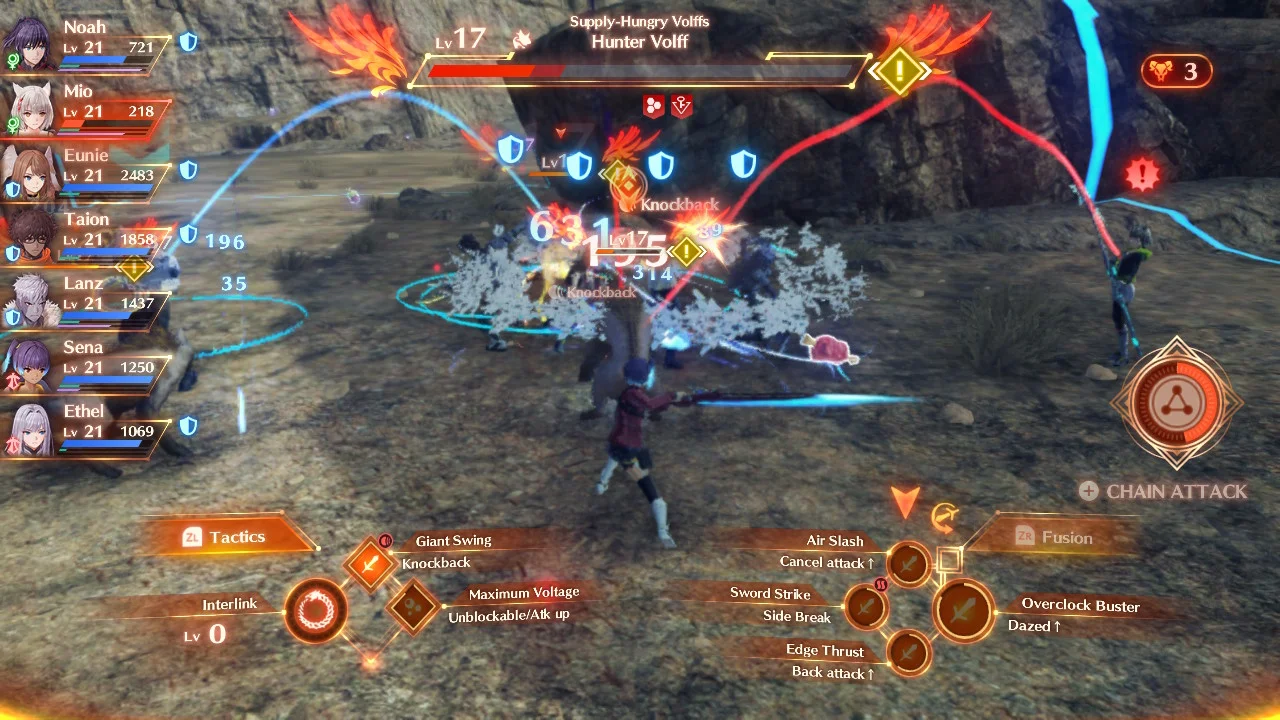
The main draw this time is the focus on party composition and a class change system similar to Xenoblade X. Any of the six main party members can take on any class you want them to, provided you’ve unlocked them already. With this, you can take on a wide array of play styles to suit whatever preference you may have. Want to essentially immortalize your party? Make a pack of healers. Want to go hyper-offensive and melt boss HP in a short amount of time? Make everyone a Swordfighter. That’s the simplified explanation of it, but your options are truly immense. These options can even be expanded further with Heroes, party members outside of the main characters with fixed classes and skills of their own that can bolster your strategic potential.
Characters can also have more unique builds beyond their class thanks to the new Master Arts system. Once you’ve hit an experience threshold with a given class, you can take certain arts once exclusive to that class and mix them with whichever other class you like. So while a character may take on an attacking role, thanks to Master Arts, they can do other things like use arts that draw aggro or heal your party members. It’s a system that prioritizes preference and freedom above all else.
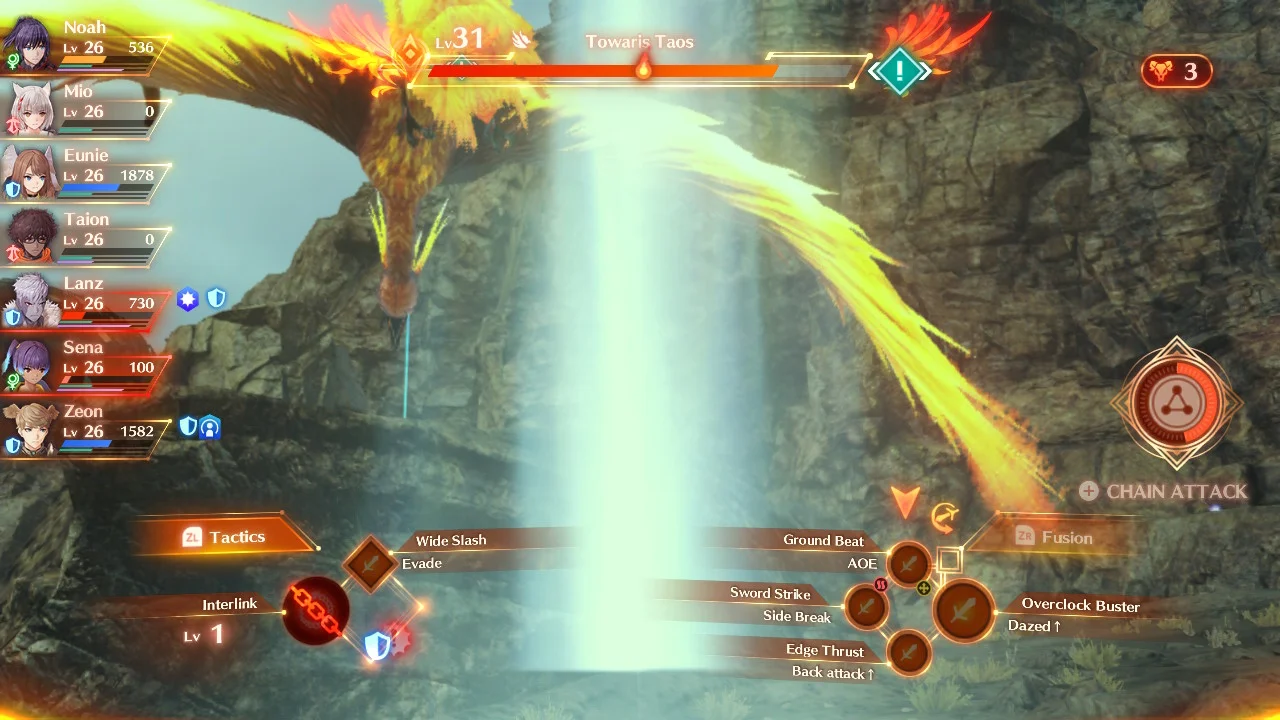
The last aspect around building a party is with Accessories and Gems, which can be bought or created. These are equipment that give you straightforward, but essential buffs to your party members. They can range from speeding up recharge times to Arts, to having it so a healer gives a downed party member for revival. There’s not quite as much experimentation to be seen here, but the buffs provided make them exciting to get one’s hands on.
All in all, combat is quite fun. Throughout the game’s playtime, experimenting with new ways to play never got old. If I had to raise one major complaint, though, it’s that you’re at the mercy of the AI during particularly difficult battles. With the typically high number of participants during a given fight, it’s very easy to lose track of what’s going on amidst so many things crowding the screen at once. This often meant that I had to defer to hoping that the AI would make correct plays during battle in order to keep a semblance of focus. Many times the AI would pull through for me, many times they also didn’t. It’s not at all an ideal setup.
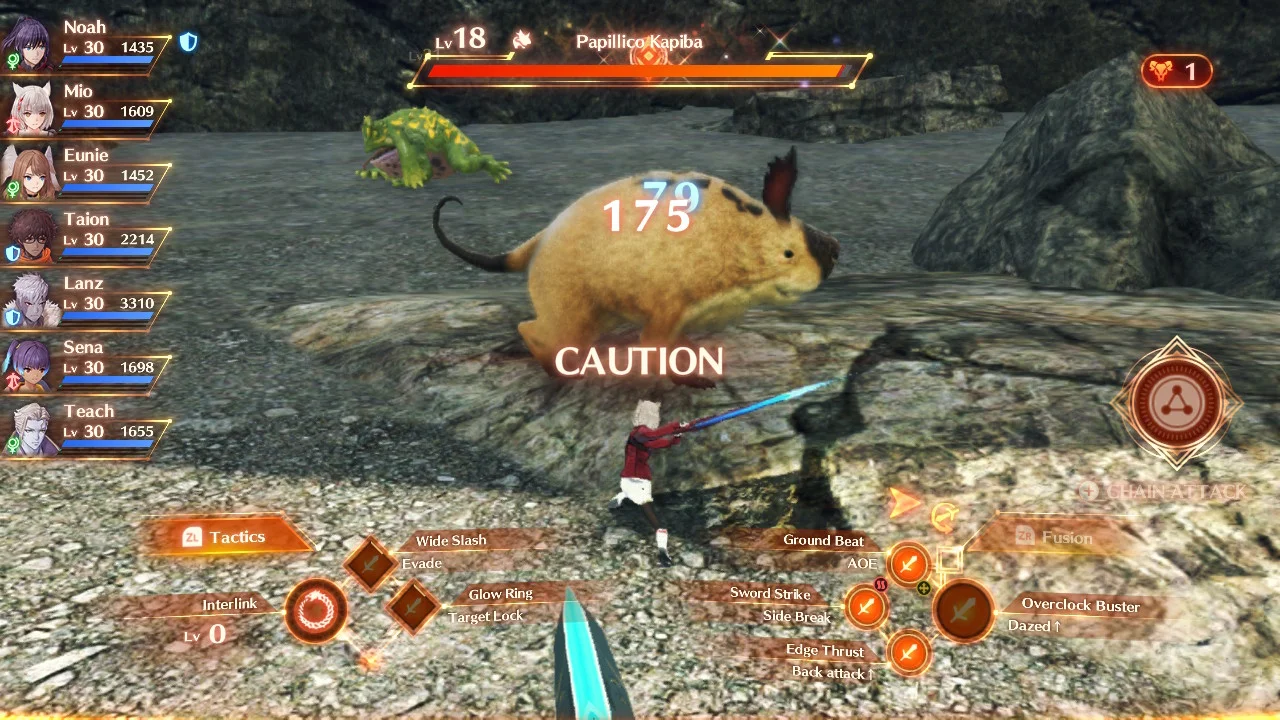
With Your Strength Combined
The final two aspects of combat that aren’t fully explored until later on are Interlinks and Chain Attacks, which play vital roles in dishing out the most damage. With Interlinks, two characters combine into a single being for a limited time, able to cast far more powerful Arts and take no damage for a short amount of time. Interlinks are a fantastic addition to the core gameplay, allowing for players to adopt more strategies on the fly. For example, Interlinking just before a boss is about to deliver a powerful attack allows you to completely negate any damage you would have taken otherwise. During the early game, it’s seldom used since fights rarely facilitate the need for it, but I found myself relying on it more and more as difficult fights cropped up more frequently.
On the other hand, Chain Attacks are actually a staple of the Xenoblade games, with 3’s iteration of it not being far removed from how it is in the first two games. You’ll wait for a Chain Attack gauge to fill up before unleashing a devastating combination of attacks onto an enemy. During Chain Attacks, your goal is to use your entire party’s array of Arts before leading into another powerful attack. The main distinction this time is the “Orders” system, which will provide a set of buffs or debuffs backed by a character’s class. By playing into these orders correctly, you can keep a Chain Attack going for longer, which steadily increases damage.
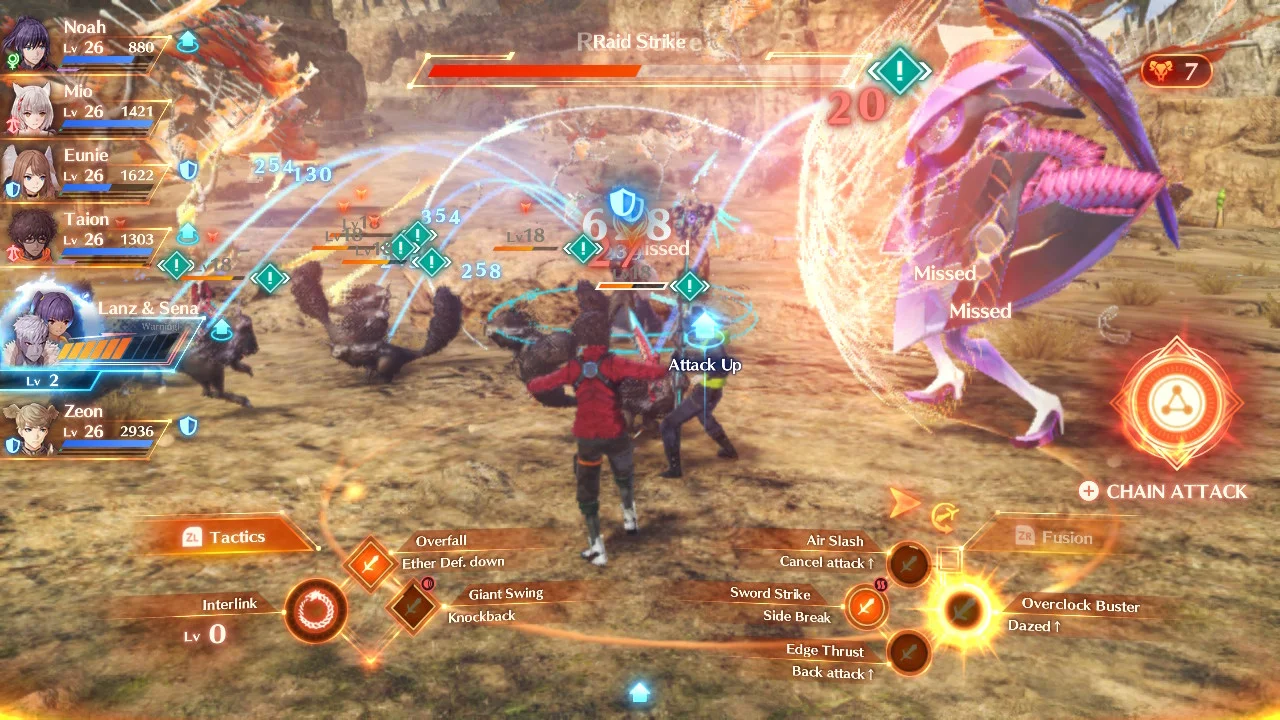
Defeating an enemy while a Chain Attack is still active leads to a state called Overkill, where you’ll keep the attack going to net far higher EXP yields at the end of a fight. You can turn Overkill off in the settings, which I recommend. Xenoblade Chronicles 3 is a ridiculously easy game to accidentally power level yourself in, and Overkill is one of the biggest culprits for why that is.
Both Chain Attacks and Interlinking are strong mechanics that tie the game’s themes into its core gameplay. The problem with both, as well as other aspects of its combat, is that it takes quite a while for you to unlock the full extent of it. These become fundamental to how you go about fighting in Xenoblade Chronicles 3, making the hours before you unlock everything else feel neutered by comparison.
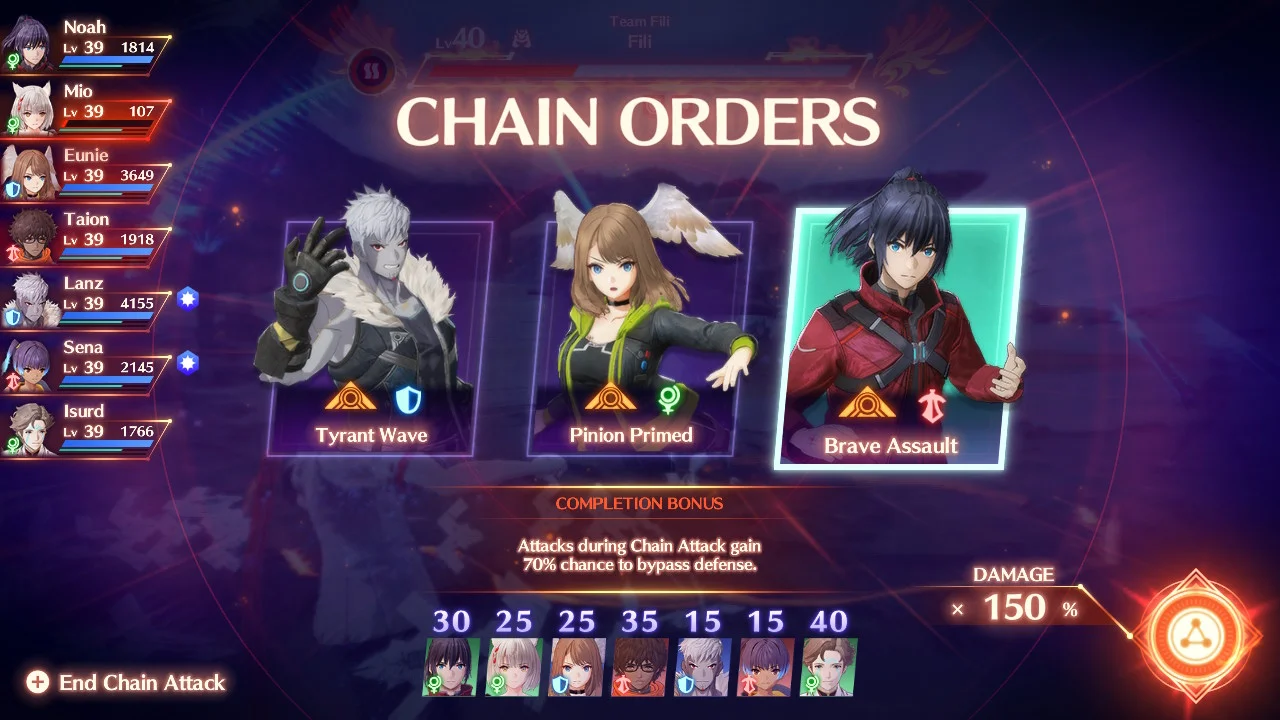
Through the Valleys, Wastelands, and More
With a new Xenoblade game inevitably follows an incomprehensibly huge world to explore. Xenoblade Chronicles 3 is no exception to this rule, and thanks to some smart changes made to its pacing and progression system, it’s incredibly fun to explore.
It starts out as what you might expect, running through huge vistas full of fantastical land masses that are difficult to describe with words alone. But the main thing that gives Xenoblade Chronicles 3 its flavor is in both its structure and the ways in which you reach new areas. Unlike Xenoblade 2, which was an almost entirely linear affair with locales that happened to be huge, 3’s approach is to segment the world based on what you have at your disposal.
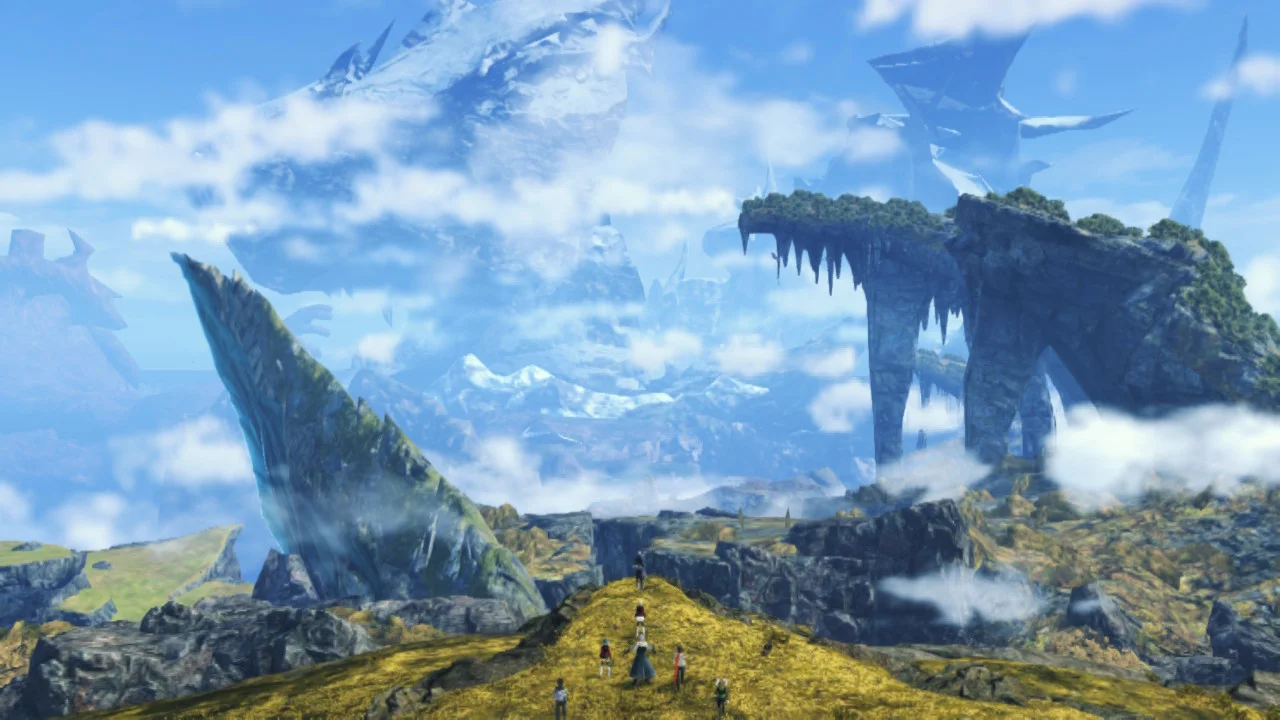
You still progress through the story and world in a linear fashion, but the secrets of Aionios lie off the beaten path. While you can certainly see the areas you might want to go to, whether you can reach them or pass through them is another thing. Thanks to smart enemy and obstacle arrangement, Aionios takes on an appeal not dissimilar to a Metroidvania. Whether you see an area is one thing, but high level enemies might litter the path and stop you in your tracks. Or you might find areas that can only be accessed via the use of a Field Skill.
The name “Field Skill” might bring back bad memories from Xenoblade 2, but here, they’ve been completely reworked. Instead of being progression blockers based on arbitrary numbers, Field Skills in Xenoblade 3 are power-ups that give you the keys necessary to open Aionios’s many doors. These power-ups can range from walking up steep inclines, to grabbing hold of special walls, to rail grinding over bottomless pits. Field Skills are an excellent addition to the gameplay loop of exploration. New ways of traversal also granted me those special ‘aha!’ moments, when I realized I could finally reach an area once out of my grasp.

Additionally, Xenoblade Chronicles 3 has a far more comprehensive map and compass system compared to previous games. Huge though Aionios may be, it’s hard to get lost in this game unless you essentially force yourself to. A line that traces along the ground at all times will show you where your next destination is. If you want to explore on your own terms, you’re free to turn this off, but if you’re interested in getting to the next story beat, you’ll be fine too.
Quests and Heroes
It isn’t a Xenoblade game without a ridiculous number of side quests to take part in, and 3’s naturally no exception. Throughout most major biomes, you’ll stumble upon colonies filled with people who suffer from problems that need solving. These can range from lacking a resource, to finding missing persons, or monster slaying. While basic and largely what you would expect in execution, the writing quality of the sidequests is commendable. Some characters appear over the course of multiple quests, having their own character arcs. It’s thanks to this that side quests feel like little pieces of a much bigger world, making them much more fulfilling to complete.
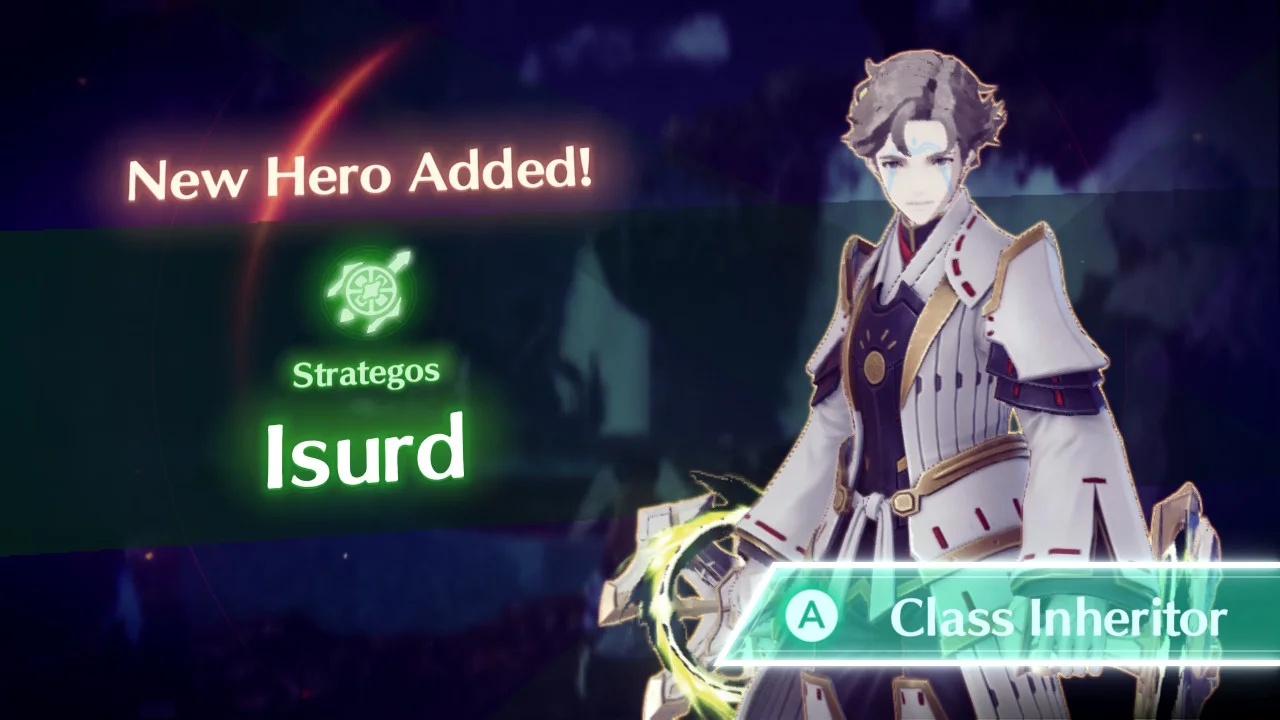
The bigger aspect of side quests are Hero Quests. These are longer and more involved quests revolving around key figures in the world of Aionios. While these aren’t all that different structurally from regular quests, they are very much worth your time as they’ll grant you a new party member and class to toy around with. Hero Quests are somewhat similar to Blade quests in the previous game, but they’re not nearly as strong writing-wise. After my fourth or fifth Hero Quest, I was struck with a strong sense of deja vu as many of them had the same conclusion or message. Before long, they took a predictable flowchart that left me less engaged than I would have been otherwise.
Doing these quests also grants you Affinity Charts with the colonies that you find across the world, giving you a wide variety of perks and benefits. If you’re looking for a major edge in battle, doing side content is sure to help you along quite easily.
Qualities of Life
On that note, it’s worth stressing just how much effort was put into making sure Xenoblade 3 is a game more easily understood than its predecessors. Xenoblade 2 was lambasted by both fans and critics for tutorials that were so bad, they felt like they were teaching you the wrong things. To say that Monolith Soft took these criticisms to heart might be an understatement, the game is practically screaming about all the lessons it learned from 2’s faults.

Tutorials are to the point and teach you exactly what you’d need to know most about its mechanics, as well as stressing the importance of all of them. Though it’s a bit of an overcorrection, with tutorials being staggeringly frequent in the game’s first few chapters, it teaches you what you need to know in the long run. Ultimately though, they make up a minute portion of your playtime, and you never feel like you’re lacking any critical information. The game even has a simulation mode, allowing you to toy with any mechanic if you feel like you’ve lost your grip on them.
On-screen information is also easier to parse than before, with a UI that is both less intrusive and more informative. What does what is spelled out clearly and in no uncertain terms, and I’m never left having to experiment to figure things out. With the many layers of complexity present in 3’s combat, this is a huge relief.

Visuals and Art
Xenoblade Chronicles 3, in both art style and character design, is a refinement of the visuals present in Xenoblade 2. Every aspect, from animations, to character modeling and design, to environmental work has been improved. Character designs in particular have been massively improved over 2, with a body of designs that feel much more cohesive while still being eye-catching. The main party in particular looks simply excellent.
Another big highlight that you’re sure to notice out the gate are the stunning cutscenes. From the initial opening of the game, 3’s cutscenes are imbued with a movie-like quality that makes everything a real joy to watch unfold. Battle choreography during showdowns between the heroes and villains rank among some of the most creative I’ve ever seen in a video game.
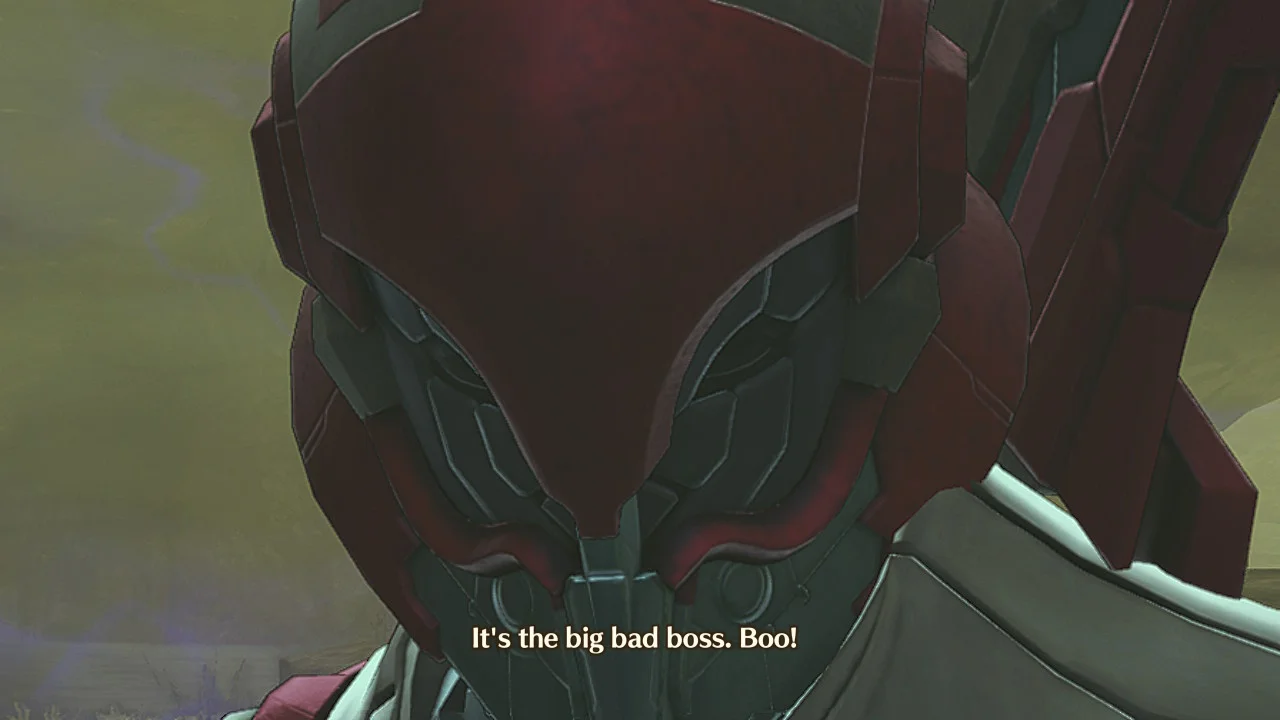
Though there has been great effort in making sure Xenoblade Chronicles 3 can look as nice as possible, it’s unfortunately let down by a low resolution. The Switch buckles hard under the immense weight of the game’s technical demands. In my time playing the game, I’ve had regular frame drops, hitches where the sound would temporarily cut, and even crashes on rare occasions. So while Xenoblade 3 is certainly a pretty game, you’re looking at it through a dirty lens.
Sounds of Aionios
With the tone of Xenoblade Chronicles 3 being more somber and ponderous, so too is its music. While previous games are known for their bombastic and grand pieces to sell the scope of their worlds, 3’s approach is different. Rather, the music of 3 opts to express how sad and tattered Aionios is. When traveling through wastelands, huge and open grassy fields, and so on, you’ll be accompanied by ambient and slow-moving pieces that help bring the mood to life.
While this kind of music is certainly well-intentioned, much of it ended up blending in and becoming rather samey to me. With some exceptions, a lot of the music is defined by soft acoustics or flute, with most of it not leaving an impression. Not helping things is the game’s generally lackluster soundscape. Ambiance is appreciable by itself, but the only thing I’ll really be left hearing throughout most of Xenoblade Chronicles 3 is character chatter and the incessant sound of footsteps as the party members run about.
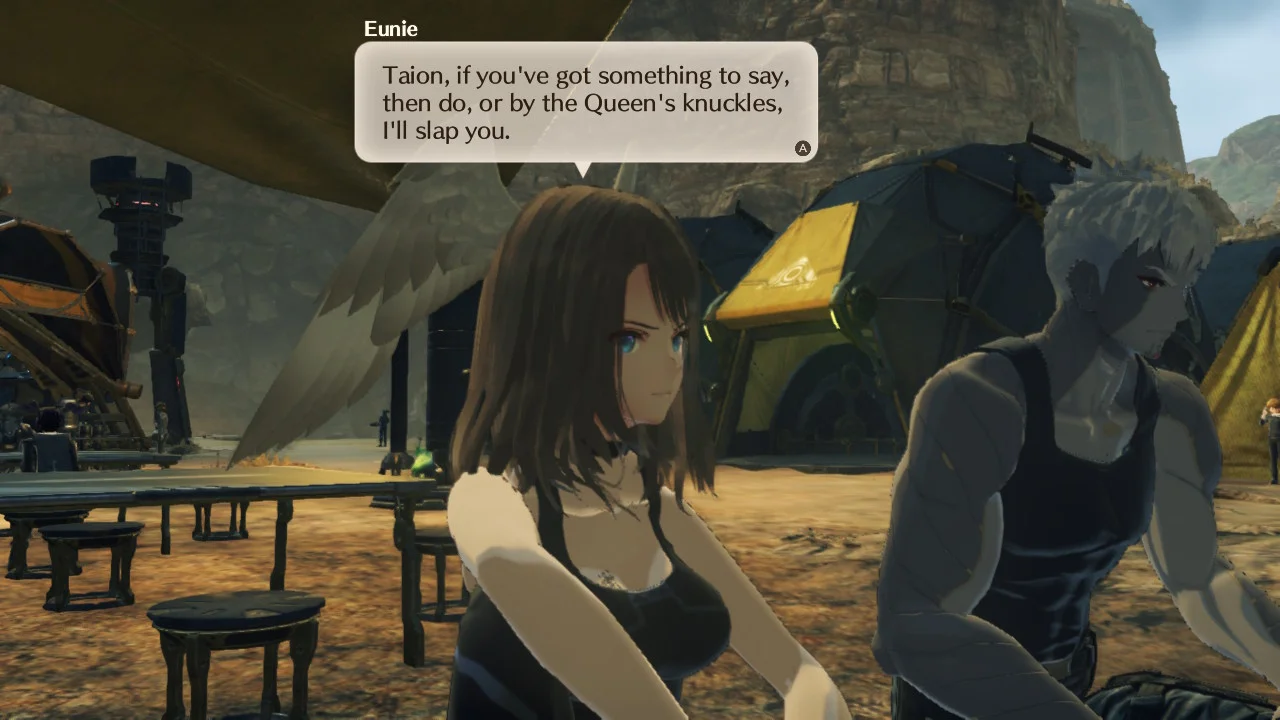
Where the music does stand out is during cutscenes, though. Incredible orchestral pieces and the signature stylings of composers ACE help to punctuate the tension and emotion behind many scenes, elevating them to heights they wouldn’t have reached otherwise. The battle music is quite good as well, as per usual.
The last aspect of sound is the voice acting, which is vastly improved over Xenoblade 2’s immersion-shattering lack of voice direction in the dub. There’s not too much of note with the dub, and I see that as a good thing. Everyone delivers their lines with the emotion and power you would hope they would, and 3’s cutscenes benefit greatly because of it. There’s also proper lip sync for the dub, so characters aren’t flapping their lips like a poor dub of a foreign film anymore.
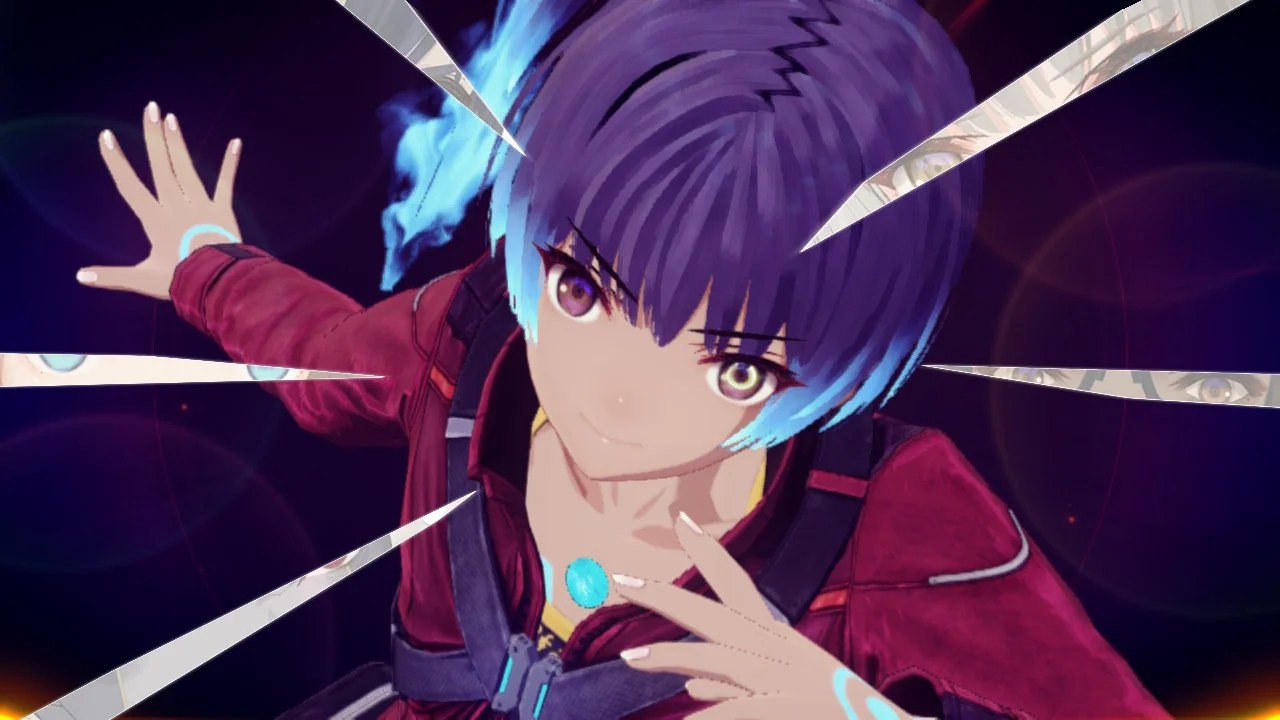
Verdict
At its best, Xenoblade Chronicles 3 is the peak of Monolith Soft’s sterling record of RPGs. They’ve taken many criticisms of past games in stride and created a game that felt like an evolution in many respects, rather than a compromise. That said, it does end up stumbling into some of the same trappings that have held back past games, while bringing in fresh problems of its own. Xenoblade Chronicles 3, for better and for worse, puts the magic and weirdness of the Xeno series on full display.
XENOBLADE CHRONICLES 3 IS RECOMMENDED

Purchase: Nintendo Store
If you would like to see more JRPGs, you may be interested in our review of Shin Megami Tensei V or Persona 5 Royal. You can also check out our review of Pokémon Legends: Arceus.
Many thanks go to Nintendo for a Nintendo Switch review code for this title.
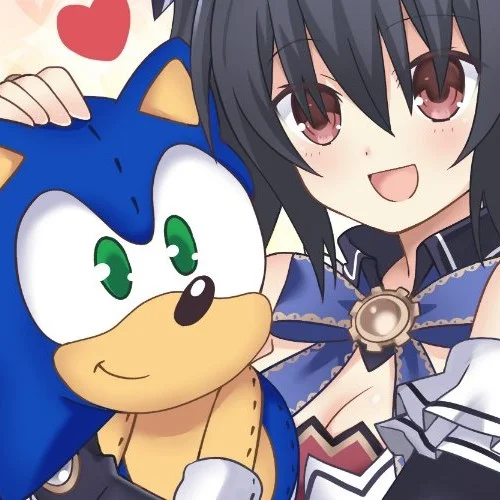
A hobbyist who took up the pen to write about their favorite pastime: games. While a lover of many genres, Isaiah Parker specializes in Platformers, RPGs, and competitive multiplayer titles. The easiest way into his heart is to have great core gameplay mechanics. Self-proclaimed world’s biggest Sonic fan. Follow him @ZinogreVolt

